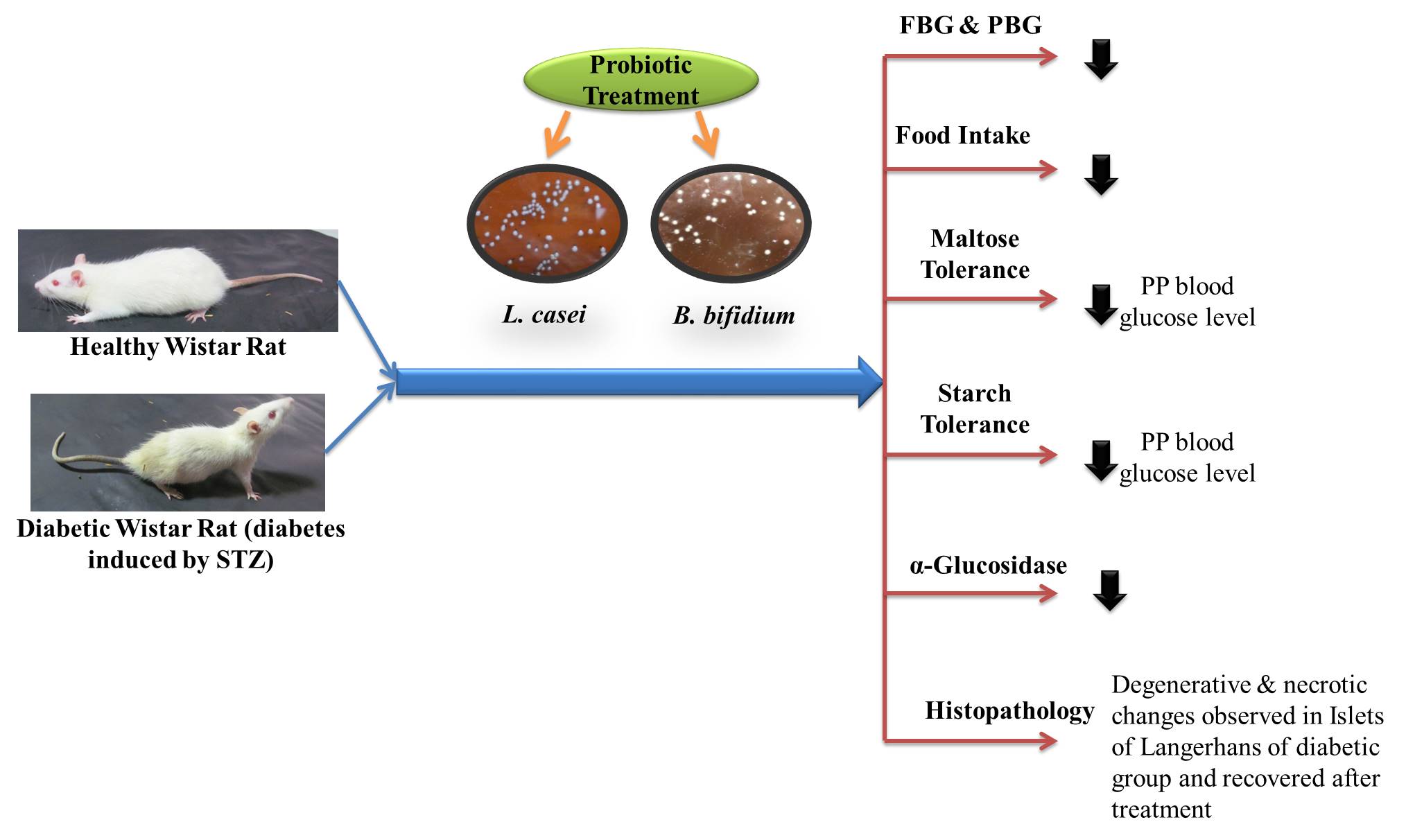Lactobacillus casei and Bifidobacterium bifidum reduces postprandial hyperglycaemia, inhibits α-glucosidase activity and improve histology of pancreatic islets in streptozotocin induced diabetic rats

Keywords:
α-glucosidase, diabetes, plant medicine, phytomedicine, antidiabetic, postprandial hyperglycaemiaAbstract
Lactobacillus and Bifidobacteria are generally accredited as potential anti-diabetic agents, but the mechanism of action is still not clear. This study aimed to investigate the result of administration of Lactobacillus casei and Bifidobacterium bifidum on α-glucosidase enzyme, postprandial blood glucose level, and histological changes that occur in the pancreatic β-cells in streptozotocin (STZ (50 mg/kg body weight)) induced diabetic rats. The experimental diabetic rats were treated with a single dose of L. casei and B. bifidum alone and combination for 28 days. The diabetic animals of a positive control group were treated with the standard hypoglycaemic drug, acarbose (10mg/kg body weight). Maltose and starch tolerance tests were performed. Treatment demonstrated significant hypoglycemic activity, lower postprandial blood glucose levels induced by maltose and starch loading in diabetic rats. The results demonstrated that L. casei and B. bifidum had α-glucosidase inhibitory activity and can reduce blood glucose level observed from the maltose and starch tolerance test. Histological analysis showed treatment prevented the function of pancreatic islets and regenerate degenerated cells.



